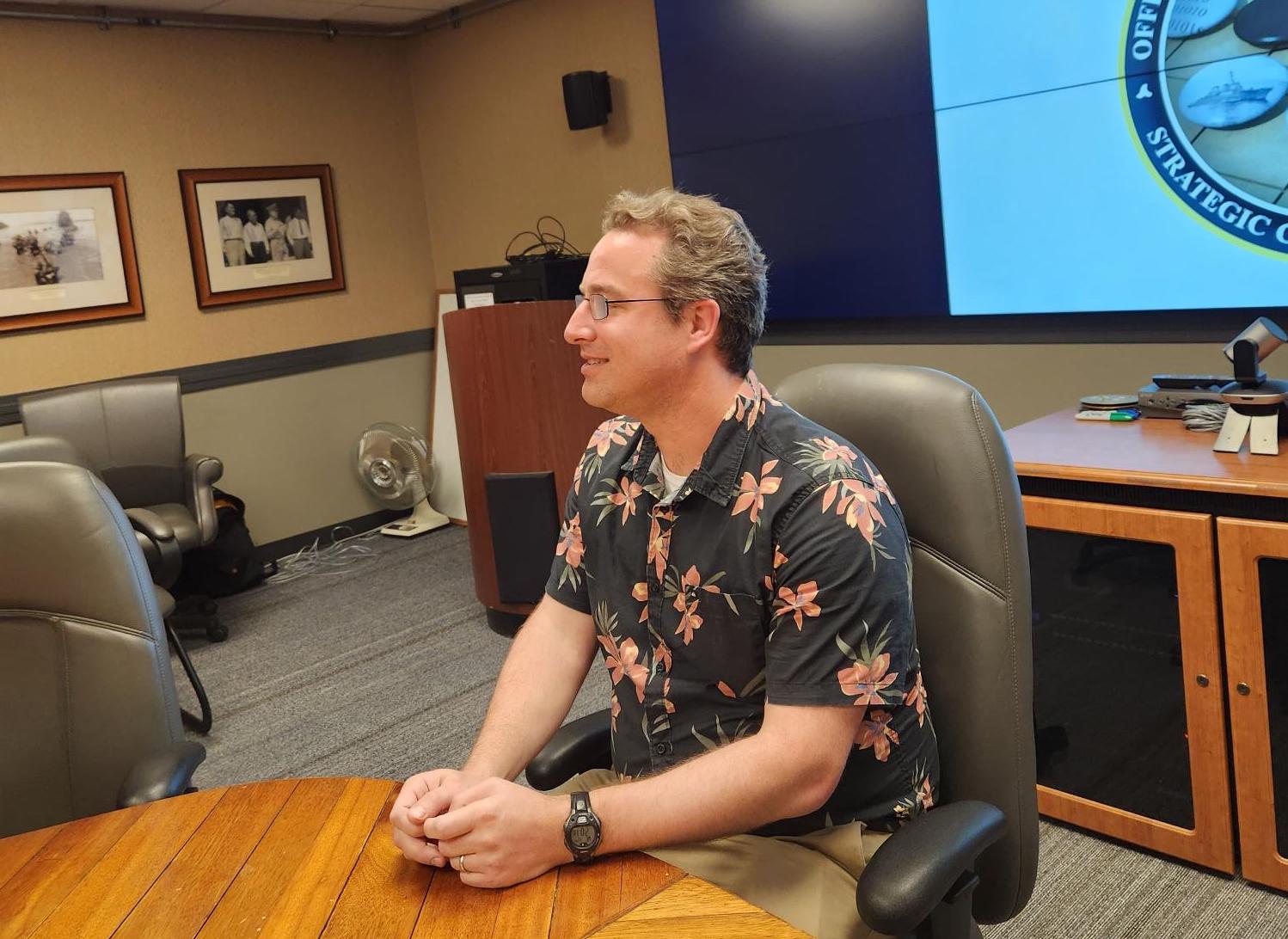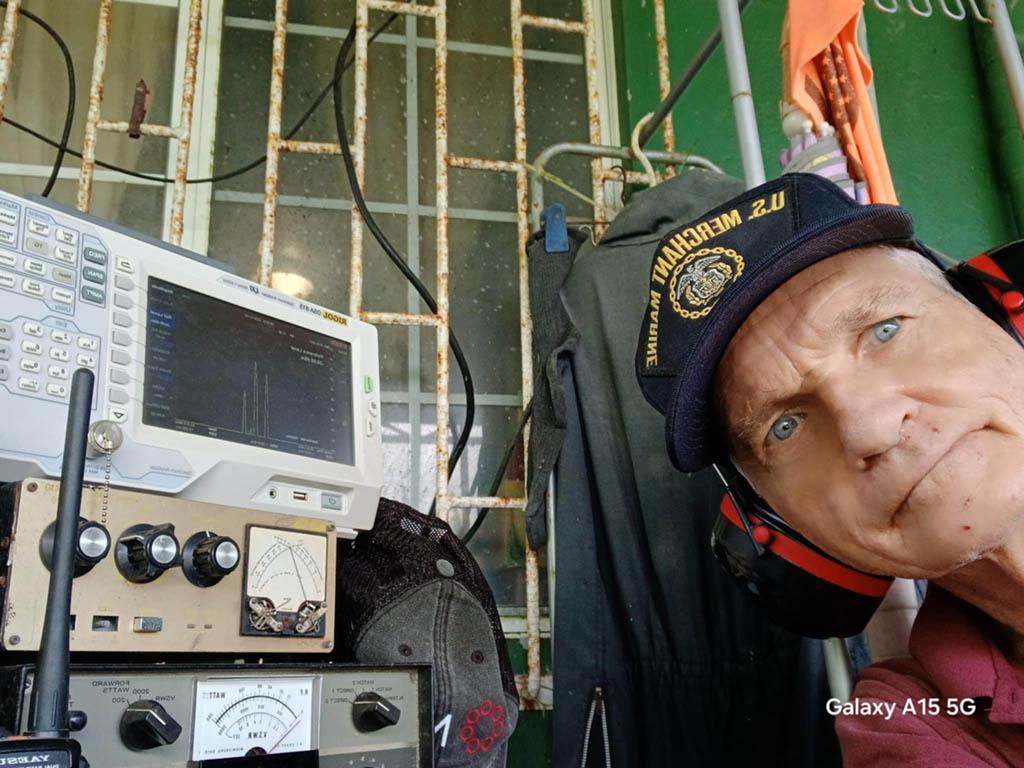BY MAUREEN N. MARATITA
Journal Staff
Guam is now being considered as a possible location for a nuclear reactor, but also may not make the list of locations.
Jeff Waksman said when nuclear microreactors are ready to be deployed by the U.S. Department of Defense, he expects that they will first be allocated somewhere in the U.S. mainland. “It’s easier particularly from a political and regulatory perspective to do that.”

Nevertheless, he said, an earlier study by the Pentagon did not even consider Guam as a location.
Waksman is project coordinator for Project Pele at the Strategic Capabilities Office, within the Office of the Secretary of Defense. Project Pele was first mooted by the Indo-Pacific Command in Hawaii, where its name comes from, according to media reports. Pele stands for Portable Energy for Lasting Effects.
After arriving in Guam on Jan. 20, Waksman and five colleagues are on-island for a week to consider the island as a possible location. His team has also been to Alaska and Hawaii, he said.
However, placing a nuclear microreactor anywhere is years away.

The prototype will be built in Virginia and tested in Idaho.
“We are going to build one reactor,” Waksman told the Journal. “And then we will transport the reactor to Idaho, where it will be turned on and operated for a little while.” The first microreactor will be built above ground, he said. “One thing we certainly learned in Guam is that trying to dig into the ground is not a good idea.” Corrosion is a big concern in Guam, he said.
The Department of Defense will decide if it is going to build more of the microreactors in the future, he said. Before that, he said, “We have to understand what would be the right places to have those reactors.”
What Project Pele is developing is a transportable microreactor that can in theory be used to provide power in remote or islanded locations where power doesn’t exist and for disaster recovery.
Waksman said the aim is “to learn about the different situations that are in different locations, what their power needs are, what their power resilience and performance are, as well as local political and cultural issues.”
That would include the current price of power and critical infrastructure, he said. “How is it impacted if it loses power for event three seconds?” The risk of flooding and earthquakes are also considered he said.
Research is being done now to facilitate a future Department of Defense decision on whether reactors will be built, he said. “It’s based on the fact that hopefully our prototype will be on and operating in the next couple of years,” he said.
While the current assessment is of Guam, “Other islands in the Pacific are also being analyzed for these reasons,” he told the Journal. However, he said that does not include sovereign states in the region.
Were a reactor to be stationed in Guam, he also does not foresee military installations going off the Guam Power Authority’s grid, due it its increasing need for power and its own resiliency.
The four modules that comprise the microreactor can fit inside four 20-foot containers, Waksman said. “Our container is sized for our requirements of one to five megawatts of net electric power for a minimum of three years at full power operation, and its got to be transportable by rail and truck and plane.”
According to literature, for Department of Defense usage, the microreactor should also be capable of shutdown, cool down, and disconnection in less than seven days. The DoD’s Strategic Capabilities Office also required that the unit should be capable of starting up within less than 72 hours from the unit’s arrival to reaching full power operations.
One of the requirements is that no nuclear waste will be left behind, Waksman said, unlike at commercial reactors. “If we were going to bring a reactor to any kind of austere location, we would have to bring it all back. … There would be no radioactive material left behind.”
An average microreactor needs about 17.3 acres compared to 640 acres for a traditional reactor plant, according to literature on the project.
Developed by BWX Technologies Inc. as prime contractor, Project Pele is also supported by other companies for what Waksman told the Journal is currently estimated at a $600 million to $700 million project. That would be for the whole program going back to 2019, he said.
BWXT also developed the TRISO fuel - or Tri-structural ISOtropic particle fuel - which powers the microreactors.
According to the Department of Energy, TRISO fuel is the “most robust nuclear fuel on earth,” as the fuel can withstand high temperatures without melting and offers a higher level of safety.
The need to use non-fossil fueled power has had various U.S. states looking at nuclear power. Guam’s Consolidated Commission on Utilities has a policy on nuclear energy, although it recognized that potential usage is years in the future. The group had met with the Guam Power Authority, Waksman said.
“The prototype we’re building is being designed for military purposes,” Waksman told the paper. However, he said, “We expect that there will be commercial spin-offs. There would be a commercial variant, that would probably be a less mobile version, that would be a little bit cheaper that would make more sense commercially.” Precedent exists for this, he said. “The DoD can build the first one, and then commercial spinoffs can allow clean energy.”
In addition, Waksman referred to President Joseph R. Biden’s commitment to triple the amount of domestic nuclear power the U.S. produces to reach clean energy targets.
Sen. Sabina F. Perez in July introduced Bill 151-37, aimed at banning nuclear energy on Guam, following concerns that a 360-degree missile system planned by the military could include nuclear microreactors as a power source.
Waksman said there are currently no plans for the Missile Defense Agency to use nuclear power in Guam.
Joint Region Marianas said at the time it does not believe that the local government can ban the use of nuclear reactors on federal land, according to a legal analysis, according to media reports.
Waksman said research is not the sole purpose of the visit, but rather to share information and judge local reactions. Aside from meeting with media, he said, “We met with the governor, we’re meeting with the legislators … We feel that being able to answer questions and help reduce that uncertainty will help reduce anxiety for a lot of people.” He also referenced a mention in the 2024 National Defense Authorization Act that Congress “would like a briefing on whether nuclear power might be a decent bet for Guam.”
Waksman later said that local concerns are different wherever the Project Pele team visits. “I felt like I learned a lot meeting with the governor,” he said. “We’ve learned a lot every day that we’ve been here.” The governor had a lot of informed questions, he said.
Randel Sablan, director of Joint Region Marianas; told media that the visit of the group to the 37th Guam Legislature on Jan. 25 will be live streamed.
“If you look at the new technology that is coming online … energy is a huge challenge,” Waksman said. “It’s what actually led this program to be founded,” he said. “The process of moving millions and millions of gallons of fossil fuel across the ocean constantly is just not a practical solution. It’s also not a good move for the environment. … That’s why we’re looking at all sorts of options.” mbj
Project Pele considers nuclear power for Guam
Recommended Articles...

Nominations open for the 2025 Reina A. Leddy Guam Young Professional of the Year Award
The Guam Chamber of Commerce’s Guam Young Professionals announced that nominations are now open for the 2025 Reina A. Leddy Guam Young Professional of the Year Award.
Read More 
Pay-Less Supermarkets celebrates reopening of refreshed Sinajana store
Pay-Less Supermarkets hosted a grand reopening of its newly renovated Sinajana store on Dec. 6.
Read More 
Open and shut case Economic variations: The Matcha Tokyo opens, Tony Romas reopens; two others close
In Guam’s turbulent economic landscape, a new restaurant opens, and one restaurant is saved from permanent closure. Reflecting the difficulty of the economy, two businesses have closed doors.
Read More 
Amateur radio in Saipan and Guam still has fans using the radio waves
GARAPAN, Saipan and YIGO, Guam — Romeo “Bong” Malasarte and Eddie Williams are among the few remaining enthusiasts of the once-popular hobby of amateur radio on Saipan.
Read More 














